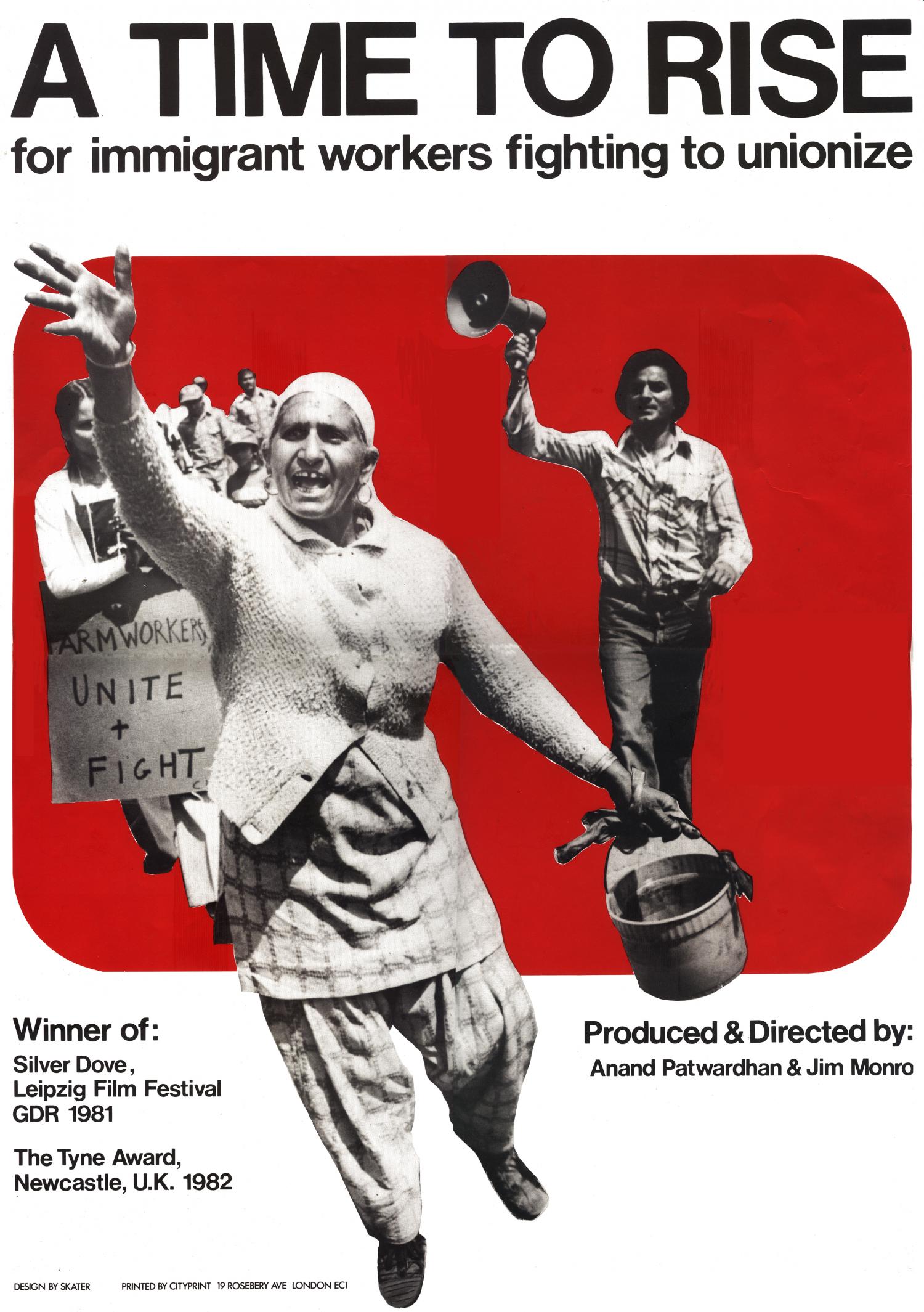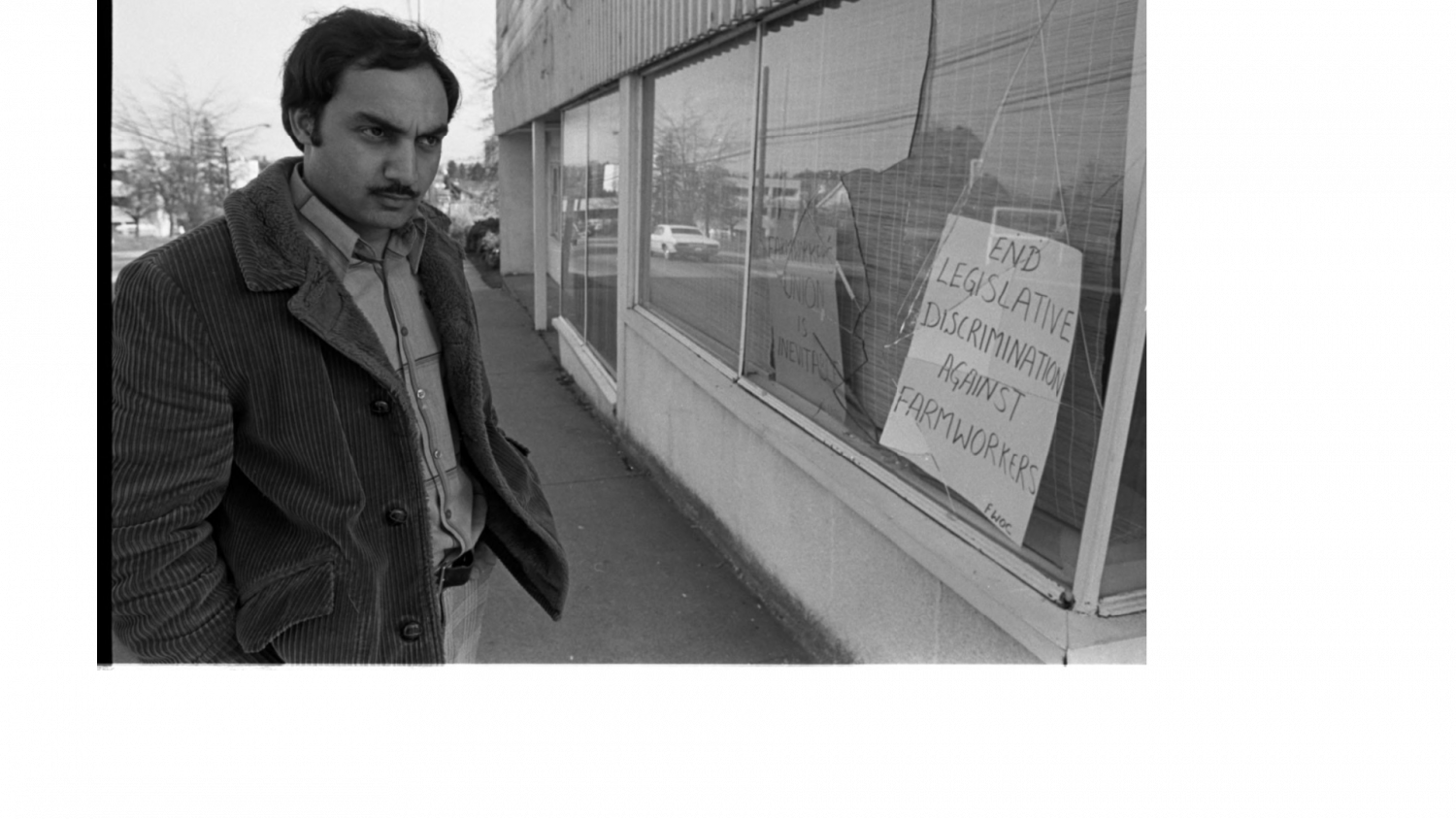Canadian Farmworkers Union
South Asian immigrants establish Canada’s first farmworkers union
Date: 1980
Pritam Kaur Hayre, a 54-year-old native of Punjab, India, woke up every morning around 5:45. As the sun steadily rose, she made lunch for herself and her son. Then she would head heading to the fields of the Fraser Valley to pick fruit. During the busy season, Pritam's work days lasted 12 hours. As the sun fell, her body ached, her ankles swelled. And though she often worked seven days a week in miserable conditions, Hayre only made between four and five thousand dollars a year. In the early 1980s, other farmworkers in British Columbia made as little as $2,500 a year— a little less than $7,400 today.
“We are starving, so we do it,” explained Hayre.
By 1980, laws guaranteeing a minimum wage, compensation for injured workers, and safety standards in the workplace had existed in B.C. for more than 60 years. Other hard-fought rights, like the eight-hour workday and overtime pay, had also been around for decades. But these protections didn’t apply to everyone. Hayre and her colleagues, the majority of whom were recent immigrants, were excluded. As is still often the case, farmworkers were paid based on piece work — how much they could pick. The B.C. government now regulates the wages, but back then, farmers did.
Most farmworkers also didn’t get to keep everything they earned. Middlemen known as labour contractors, often themselves South Asian immigrants, facilitated the hiring and transportation of workers. They typically received between 25 and 40 per cent of a worker’s pay. Now regulated by the provincial government, agricultural contractors remain a facet of migrant farm work in B.C.
As B.C.’s health and safety standards didn’t apply to farm labour, working conditions were abysmal. Often farms didn’t provide drinking water or washrooms. Workers, many of whom didn’t speak English, were asked to spray dangerous pesticides with minimal or no protective gear. Some workers and their families lived in shabbily constructed housing provided by farmers. In 1980, a seven-month-old baby was found drowned in a bucket of water on a Fraser Valley farm, the only source of drinking water for 16 families. The B.C. Human Rights Commission later attributed the poor working and living conditions on B.C. farms to “legislative racism.”
Fed up with the appalling work conditions, a group of South Asian immigrants founded the Canadian Farmworkers Union (CFU) on April 6, 1980 — only five years after farmworkers were officially permitted to start unions. Their goal was to eliminate the labour contracting system, improve conditions on farms, secure a minimum wage and have farmwork included under B.C.’s health and safety regulations. Shortly after the union formed, B.C. finally included farmworkers in a new Employment Standards Act. However, the move changed little. Farmworkers continued to be excluded from B.C.’s health and safety regulations, as well as laws surrounding a minimum wage and overtime pay.
That same summer, Hayre lost her job for participating in a CFU rally in Abbotsford. An early union member, Hayre got involved after some young women she worked with told her a farmer had sexually harassed them. “So I went to see him,” she recounted years later. “He threatened me with a gun, but I said, ‘I’m here, and I’m not going away.’” Hayre later became a poster child for the movement, compelling scores of farmworkers to join the union.
After years of lobbying, and several deaths attributed to unsafe working conditions, including pesticide poisoning, the B.C. government finally reformed its health and safety regulations to cover farmworkers in 1993.
Sources:
- Berggold, Craig. “The Colour of Food.” Briar Patch Magazine, 1 Sept. 2011, briarpatchmagazine.com/articles/view/the-colour-of-food.
- Blackman, Tyler A. “The Canadian Farmworkers Union: Social Movements and Labour Arrangements.” University of the Fraser Valley, 2016, arcabc.ca/islandora/object/ufv:251/datastream/PDF/view.
- Canadian University Press. “The Plight of B.C.’s Farmworkers.” The Ubyssey [Vancouver, B.C.], 20 Nov. 1980, p. 8.
- Derry, Kathleen, and Paul H. Douglas. “The Minimum Wage in Canada.” Journal of Political Economy, vol. 30, no. 2, 1922, pp. 155–88. JSTOR, www.jstor.org/stable/1822688.
- Jordan, Mark. “Canadian Farmworkers Union Chronology 1978 to 1997.” SFU Library, 17 May 2019, www.lib.sfu.ca/about/branches-depts/special-collections/canadian-farmworkers-union-chronology.
- “Lifting Everyone Up.” UFCW 1518, 20 Nov. 2019, www.ufcw1518.com/update/lifting-everyone-up.
- “Our Origins.” WorkSafeBC, www.worksafebc.com/en/about-us/who-we-are/our-story/our-origins. Accessed 26 Apr. 2021.
- Patwardhan, Anand, and Jim Monro. “A Time to Rise.” National Film Board of Canada, 1982, www.nfb.ca/film/time-to-rise.
- Patwardhan, Anand, and Jim Munro. “A Time To Rise - ਉੱਠਣ ਦਾ ਵੇਲਾ | Canadian Farmworkers Union.” YouTube, uploaded by Singhtoor, 8 Mar. 2017, www.youtube.com/watch?v=Vb5A4d0dO-8.
- Thomas, Sandra. “Lifetime: From the Editor.” Vancouver Is Awesome, 12 Sept. 2017, www.vancouverisawesome.com/courier-archive/living/lifetime-from-the-editor-3058391.
- “Pritam Kaur Hayre Played Important Role in Farmworkers Union.” Vancouver Is Awesome, 12 Sept. 2017, www.vancourier.com/living/pritam-kaur-hayre-played-important-role-in-farmworkers-union-1.22653634.
- Vancouver Board of Parks and Recreation. “Pritam Kaur Hayre.” Remarkable Women 2014, 13 Jan. 2014, remarkablewomen2014.wordpress.com/2014/01/13/pritam-kaur-hayre.
- Zussman, Richard. “MLA Raj Chouhan Becomes B.C.’s First South Asian Speaker of the House.” Global News, 7 Dec. 2020, globalnews.ca/news/7506336/mla-raj-chouhan-becomes-b-c-s-first-south-asian-speaker-of-the-house.

![The legendary union leader Cesar Chavez, president of the United Farm Workers’ of America (UFW) (center left) and Raj Chouhan, founding president of the Canadian Farmworkers’ Union (CFU) (center right) lead a major rally [...] on Cambie Street.](https://bc-timeline-backend.azureedge.net/sites/default/files/styles/gallery_resized/public/images/3-2_SFUSP_Photos-164_0.jpg)



